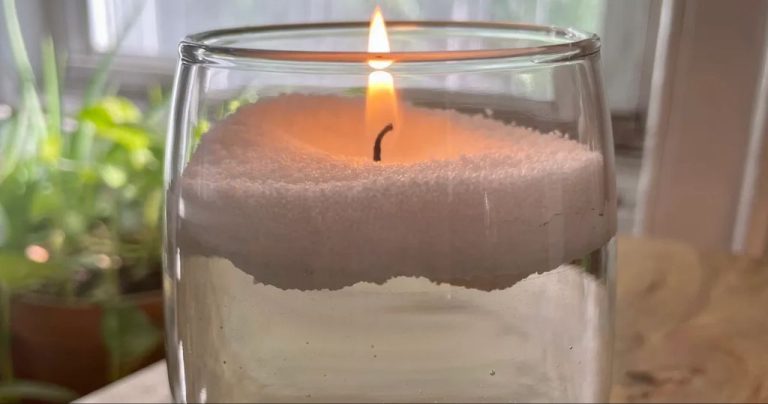Do Soy Blend Candles Last Longer?
Soy candles have become increasingly popular over the past decade as more people become concerned about the environmental and health impacts of paraffin wax candles. The global soy candle market size was estimated at USD 916.7 million in 2021 and is projected to expand at a compound annual growth rate (CAGR) of 6.2% from 2022 to 2030 (source). But what makes soy candles so desirable? One of the main reasons is their reputation for having a longer burn time than regular paraffin candles.
What Are Soy Candles?
Soy candles are made from soy wax, which is a vegetable-based wax produced from soybeans. To make soy wax, soybeans are first cleaned, cracked, flattened, and then solvent extracted. The oil is removed from the soybeans and hydrogenated to convert it into a solid wax (1).
The wax from soybeans was developed and patented in the 1990s as an alternative to paraffin wax, which is a petroleum byproduct. Soy wax started gaining popularity in the early 2000s as a renewable and environmentally-friendly option compared to paraffin wax (2).
While the term “soy candle” specifically refers to candles made from soy wax, there are also soy blend candles. These candles combine soy wax with other types of wax, such as paraffin or vegetable-based waxes like palm wax. The soy content in soy blend candles typically ranges from 30% to 70%. The blend allows manufacturers to modify the burn properties of the wax.
(1) https://www.generalwax.com/category/soy-candles/
(2) https://australiansoap.com/blogs/australian-natural-soap-blog/why-are-soy-candles-better-than-wax
Benefits of Soy Candles
Soy candles offer many benefits compared to paraffin wax candles. Some of the main advantages are:
Environmentally Friendly
Soy wax comes from soybeans, a renewable resource. Producing soy candles is more sustainable than paraffin candles, which are made from petroleum. According to WaxPoeticCandleBar.com, soy wax is also biodegradable and non-toxic1.
Natural Ingredients
Soy wax contains no pollutants, carcinogens or toxins. It’s a cleaner-burning natural wax made from soybean oil. Beeswax candles are also natural but produce more soot than soy2.
Less Soot
According to PureIntegrity.com, soy candles produce very little soot and burn cleaner than paraffin wax candles. Minimal soot output makes soy candles safer and less messy3.
How Soy Candles Burn
Soy candles burn slower and cooler than traditional paraffin wax candles. This is because soy wax has a lower melting point than paraffin wax. Paraffin wax melts at 135°F whereas soy wax melts at a range of 115-125°F [1]. The lower melting point of soy wax means the wax liquefies at a lower temperature, creating a larger pool of liquid wax. This broader wax pool leads to a slower burn time.

Additionally, soy wax is denser than paraffin wax. The higher density results in a slower diffusion of melted wax up the wick, slowing down the burn rate. Soy candles tend to burn with a lower flame height compared to paraffin candles. The lower temperature flame is less likely to produce smoke or release harmful chemicals into the air.
Overall, the physical properties of soy wax such as the lower melting point and higher density cause soy candles to burn slower and cooler than their paraffin counterparts. This results in soy candles having a longer burn time.
[1] https://froggybottomcandleco.com
Do Soy Candles Last Longer Than Paraffin?
Yes, soy candles tend to have longer burn times compared to paraffin candles. The reason for this comes down to the density and composition of the waxes. Soy wax is denser and requires more energy (heat) to melt and vaporize the wax to release fragrance. Paraffin wax has a lower density and melts more quickly, releasing fragrance faster and burning for less time overall (Source).
Specifically, soy candles may burn anywhere from 20-50% longer than comparably sized paraffin candles. A typical paraffin candle may burn for 6-8 hours, whereas a soy candle could burn for up to 10-12 hours. The slower melt point and density of soy wax leads to a slower release of fragrance over a longer period. In general, soy candles provide a better value in terms of hours of burn time (Source).
Factors Affecting Burn Time
There are several key factors that affect how long a soy candle will burn, including:
Wick Size
The thickness of the wick is one of the most important factors determining burn time. A wick that is too small will restrict the melt pool and not allow the candle to burn to its full potential. A larger wick creates a bigger melt pool and provides more fuel for the flame, resulting in a faster burn. Most candle makers recommend using a wick appropriate for the diameter of the candle container to optimize burn time.
Candle Diameter
In general, a thicker candle will burn slower than a thinner one, assuming the wick size is proportional. This is because a larger diameter candle has more wax mass to heat and melt. Typical pillar candles may provide anywhere from 20-40 hours of burn time, while smaller votives or containers burn much quicker at 5-15 hours.1
Additives
Many soy candle makers add supplemental oils or hardeners which can affect burn performance. Adding a small amount of beeswax or paraffin wax will make the wax harder and denser, potentially extending burn time. Including oils like coconut or palm oil will make soy wax softer and increase wax pooling and fragrance throw. Finding the right balance is key for an optimal burn.
Maximizing Soy Candle Burn Time
There are a few key factors that can help maximize the burn time of soy candles:
Proper wicking is crucial. The wick should be sized appropriately for the diameter of the candle. A wick that is too small will not allow the wax to liquefy properly, while a wick that is too large can cause tunneling. Most manufacturers recommend testing different wick sizes to find the optimal balance for a full melt pool and steady burn.
Using an appropriate jar size for the candle is also important. The candle should fill the jar but leave 1⁄4” – 1⁄2” of headspace. Too large of a jar means more air space above the wax, which can lead to an inconsistent burn. The ratio of wax to vessel is optimized when using the properly sized jar.
Other tips include allowing the soy wax to cure properly after pouring, keeping the candle away from drafts during burning, and trimming the wick to 1⁄4” before each lighting. With the right wick and jar size, soy candles can provide 50-60 hours of burn time on average (https://houseoftwotrees.com/blogs/info/soy-wax-candle-care-how-to-increase-your-burn-time-make-your-candle-last-longer).
Downsides of Longer Burn Time
While having a longer burn time seems appealing, there are some downsides to consider:
Increased soot – Soy candles tend to produce more soot than paraffin candles as they burn. The soot is created from the small amounts of oils that haven’t fully combined with the wax. This can dirty candle holders and surround surfaces [1].
Cost per hour – Although soy candles may burn longer, they often cost more upfront than paraffin candles. When you calculate cost per hour burned, soy candles may end up being more expensive in some cases. Consider both upfront cost and total burn time when comparing candle options.
Toxic emissions – While less than paraffin, soy wax candles still produce some soot and scented emissions that could irritate those sensitive to fragrances. Always burn candles in a well-ventilated area.
Caring for Soy Candles
Proper care can help your soy candles last longer and burn more evenly. Here are some tips for caring for soy candles:[1]
– Trim the wick to 1⁄4 inch before each lighting to prevent excess smoking and uneven burning. Use wick trimmers designed specifically for trimming candle wicks.
– Allow the candle to pool or form a liquid wax pool across the entire top before extinguishing it. This helps prevent tunneling.
– Avoid drafts and frequently blowing out the candle, as this can cause the wax to shrink and pull away from the sides of the container.
– Keep wicks centered as the candle burns to prevent uneven melting.
– Don’t let the wick drown or sink into the melted wax, as this can cause the flame to suffocate and smoke.
– Leave at least 1⁄2 inch of wax around the wick when the candle becomes low to prevent scorching the container.
– Store soy candles in a cool, dry place when not in use. Avoid extreme temperatures.
Following these simple soy candle care tips can help maximize their burn time, fragrance, and longevity.
Conclusion
As we have seen, soy candles often do last longer than paraffin wax candles, due to the higher density of natural soy wax. However, using containers with a wider diameter can accelerate burn times and negate this advantage. Proper soy candle maintenance like trimming the wicks and allowing the wax pool to form before extinguishing also help the candle last longer.
While a longer burn time seems ideal, it can lead to more soot and fragrance fading when a candle burns too long. The best practice is to extinguish soy candles after a few hours, keeping wicks trimmed to 1⁄4”. For maximum soy candle longevity without sacrificing performance, choose an appropriate container size, maintain proper wick length, allow the wax pool to form completely before blowing out, and relight candles once the wax has resolidified.
With proper care, soy candles can provide 50-80 hours of burn time or more. Their natural ingredients and customizable fragrances make them a long-lasting, eco-friendly alternative to paraffin candles.





